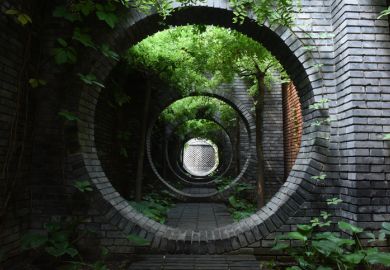A good science paper should set you thinking. A good journal should set you thinking several times in each issue. The new-look Environmental Science and Policy , under editor-in-chief James Briden of Oxford's Environmental Change Institute, certainly stands up to this test. A quick flip through the most recent issue turned up nuggets that even this jaded environmental writer found enticing.
Smogs in Madrid annually shave 51,000 years off the lives of people living there, say researchers from the city's Energy Studies Institute. That works out at only three days loss of life per inhabitant per year. But still, if you lived in Madrid all your life, you would arrive in your grave more than half-a-year earlier than if you had been breathing clean air off the surrounding Sierras.
And, by one economic measure at least, the cash value of smog impacts on health, materials and crops in the Spanish capital amounts to an extraordinary 7 per cent of the city's gross domestic product. Meanwhile, pages before in the same issue, an analysis of the winners and losers from the US decision to pull out of the Kyoto Protocol on global warming finds Russia could benefit financially from the "freeloading" Americans.
Next comes an assessment of when and how coal-mining companies can make money out of utilising the methane that leaks out of most mines. Generating power with on-site gas turbines is generally the best bet. It has the added benefit of destroying one of the planet's most virulent greenhouse gases. And so sounds like good PR. Coal industry as greenhouse good guys: who'd have thought it?
And two ambitious studies investigate scientists themselves and, in particular, how they carry out assessments of thousands of disparate research papers in two policy-critical fields - global warming and acid rain. The study of the Intergovernment Panel on Climate Change (IPCC), which has become the arbiter of the state of scientific knowledge on probably the key environmental issue for the 21st century, is particularly interesting.
The main finding is that this global endeavour is not very "intergovernmental", with most of the work "exclusively in the scientific realm" and relying on "a small group of people who know each other personally". Good science, perhaps, but sometimes bad PR - especially when this slightly closed world got into hot water a few years ago over its assessment of whether the "hand of man" could be seen in global warming.
The episode forced the IPCC to change its review practices, but also led to the development of what the review calls a "fortress mentality" that "inhibits the opportunities to bring new knowledge into the organisation and foster dialogue."
The journal does show signs of instability in the range of topics covered in its pages. Of five issues published this year, the first was a "special" on biodiversity and society; the second and third were a mixed bag covering everything from environmental policy indicators to pollution by metal finishing and recycling Brazilian food waste; while the fourth and fifth were overwhelmingly on climate change and air pollution.
But Environmental Science and Policy retains the capacity to surprise. The "special issue on air pollution and climate change" might have been expected to reveal some nasty new synergies. But instead it suggested that higher temperatures and expected changes in rainfall patterns will make forest ecosystems less vulnerable to acid rain.
And an incisiveness shines through most of the papers. By and large, papers do have a clear policy relevance. Sometimes the links to policy appear close to the philosophical. A Unesco contribution in a special issue on biosphere reserves takes as its starting point the premise that "naturalness is effectively indivisible from human influence". Nature is a cultural as well as a biological artefact, and successful biosphere reserves must recognise this, it says. But the wealth of examples discussed in the journal - from the arid rangelands of the Chihuahua desert in Mexico to the fish-rich swamps of the Tonle Sap lake in Cambodia - suggest the philosophy has practical results.
We have come a long way from the days when the first action of conservationists when given a slab of nature to protect was to throw out its inhabitants, put up a stout fence and install armed wardens. And this is a journal that, more than most others in the field, recognises the fact.
Fred Pearce is an environmental journalist and writer.
Environmental Science and Policy
Editor - J. C. Briden
ISBN - ISSN 1462 9011
Publisher - Elsevier Science (Six times a year)
Price - 561 euros



